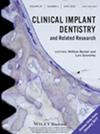Impact of High Insertion Torque on Implant Surface Integrity
Abstract
Introduction
The long-term success of dental implants depends on the preservation of supporting tissues over time. Recent studies have highlighted the release of titanium particles as a potential etiology for the onset and progression of peri-implant diseases modulated by inflammatory biomarkers. This study provides a comprehensive analysis of surface changes associated with high insertion torque placement.
Methods
Three groups of cylindrical threaded dental implants, each representing different surface topographies produced by anodization or a combination of grit-blasting and acid-etching processes, were inserted into fresh cow rib bone blocks used to mimic human jaws. Individual bone blocks were fabricated with a dimension of 20 × 15 × 15 mm, randomly assigned to the three implant groups. Prior to dental implant placement, the bone blocks were divided in half to facilitate implant removal without introducing additional damage. The drilling protocol was modified, excluding the final drill recommended by the manufacturer to ensure higher insertion torque values during the procedure. Dental implants were removed from the bone blocks and processed for analysis. Surface roughness was characterized using interferometry on the same area before and after insertion. Scanning electron microscopy (SEM) with a back-scattered electron detector (BSD) was employed to identify the implant surface and loose particles at the bone block interface.
Results
The high insertion torque protocol used in this study resulted in higher insertion torque values compared to manufacturers' protocol, but no difference was observed when comparing the three implant groups. Surface roughness characterization revealed that amplitude and hybrid roughness parameters for all three groups were lower after insertion. The surfaces exhibiting a predominance of peaks (Ssk [skewness] > 0) associated with higher structures (height parameters) showed greater damage at the crests of the threads, while no changes were observed in the valleys of the threads. SEM-BSD images revealed loose titanium particles at the bone blocks interface, predominantly at the crestal cortical bone level.
Conclusions
High insertion torque resulted in surface damage at the crests of threads, which subsequently led to the release of titanium particles primarily at the bone crest. The initial release of titanium particles during implant insertion at the bone-implant interface warrants further exploration as a potential cofactor for marginal bone loss.


 求助内容:
求助内容: 应助结果提醒方式:
应助结果提醒方式:


